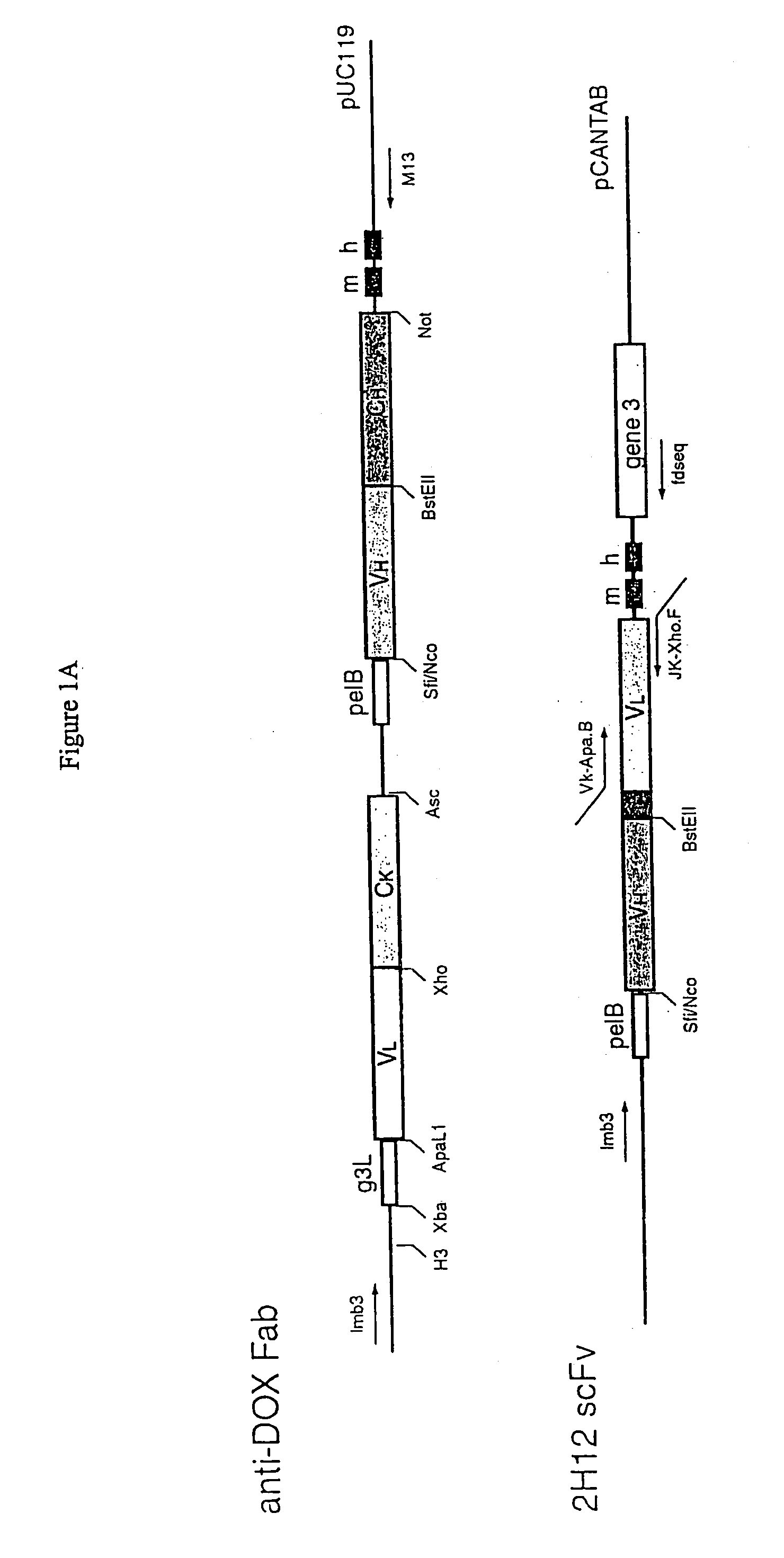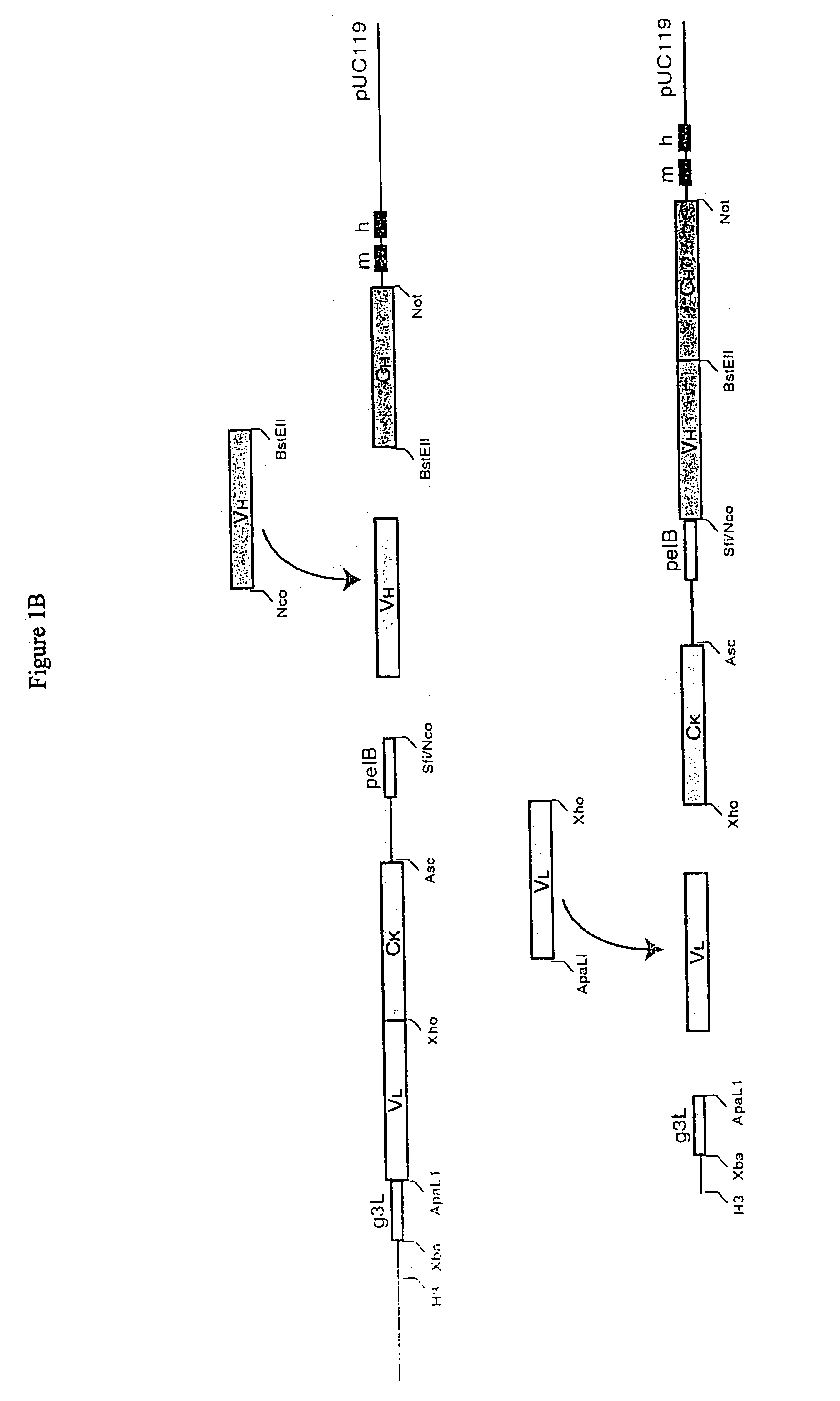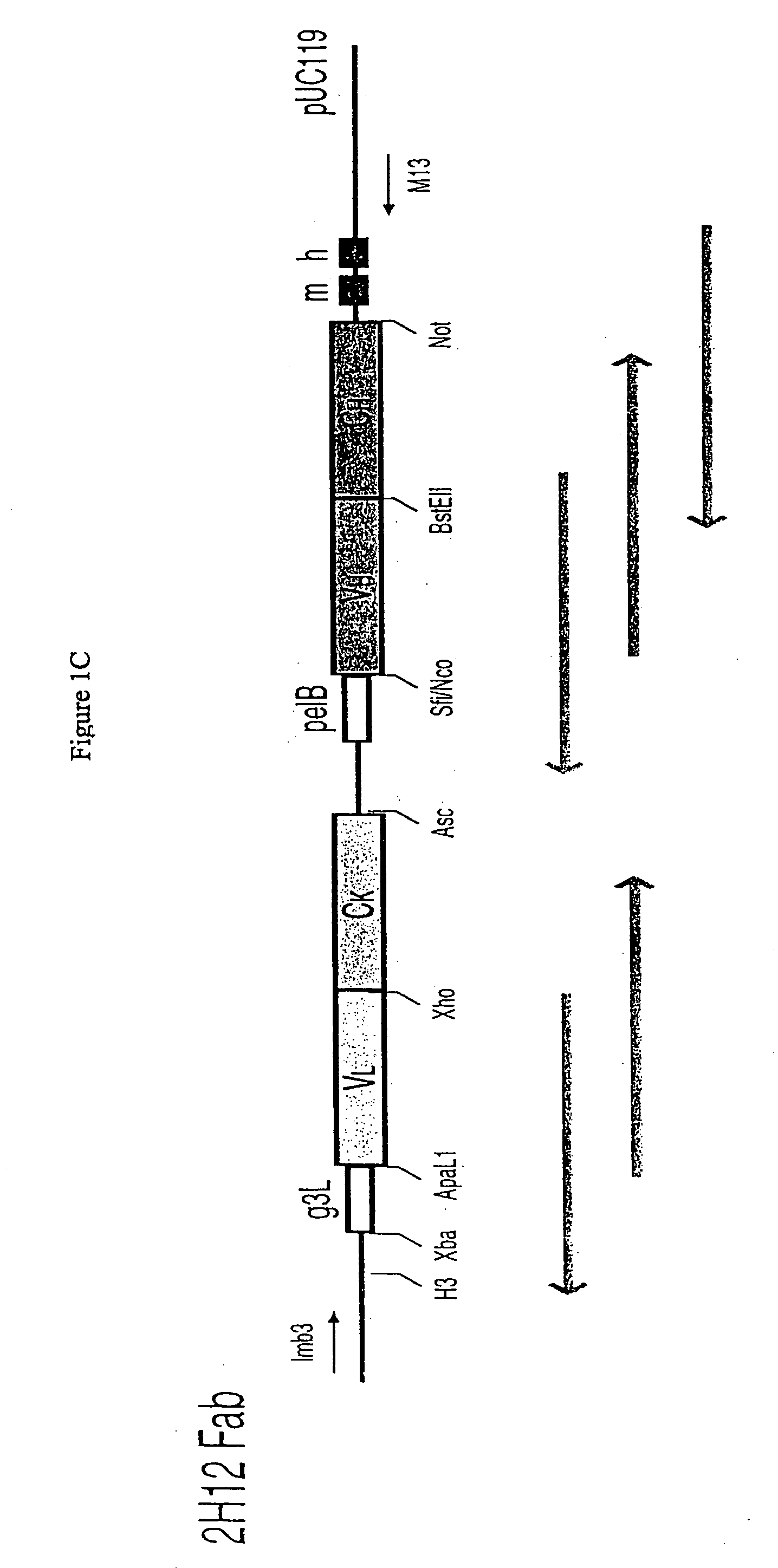Methods and reagents for identifying rare fetal cells in the maternal circulation
a technology of rare fetal cells and reagents, applied in the field of methods and reagents for identifying rare fetal cells in the maternal circulation, can solve the problems of minimal levels of non-specific binding, small risk of fetal death,
- Summary
- Abstract
- Description
- Claims
- Application Information
AI Technical Summary
Problems solved by technology
Method used
Image
Examples
example 5
6.5. Example 5
[0322] Erythrocyte-specific Antibodies Obtained by Both Postive and Negative Selection
[0323] Additional erythrocyte-specific antibodies were obtained using a modified scFv library. A nave library of Fab expressing phagemids (about 10.sup.10 species) was converted so as to express the variable regions as scFv. The heavy chain CDR3 regions were scrambled to provide additional diversity.
[0324] Specific anti-erythroblast antibodies were obtained by a combination of positive and negative selection. Erythroblasts from fetal liver that had been cultured for 1-2 weeks were used for positive selection. Adult peripheral blood leukocytes (PBL) (pooled Ficol.TM. separated white cells) were used for negative selection. Briefly, the phagemid library was mixed with the erythroblasts. The bound phagemids were then recovered from the cells by adding 0.1 M glycine buffer pH 2.2, incubating for 5 min, and centrifuging out the cells. The supernatant was neutralized by adding concentrated ...
example 1
7.1. Example 1
[0328] Construction of Subtracted cDNA Libraries
[0329] This example is directed at identifying nucleic acid sequences that are expressed at the mRNA level in fetal cells appearing in the maternal circulation, but not in any type of circulating maternal cells that might be present in a test sample after antibody enrichment. Where the target fetal cell is a blood cell precursor such as an erythroblast, the sequence should be able to distinguish fetal cells from maternal cells at the same stage of differentiation.
[0330] To accomplish this, a number of cDNA subtraction libraries were prepared in which sequences specifically expressed in fetal cell precursors are enriched. The libraries were prepared by Suppression Subtraction Hybridization (SSH), a PCR-based method that combines normalization (the matching of mRNA levels) and subtraction (obtaining differentially expressed mRNA) in a single procedure, and requires less mRNA than other subtraction methods.
[0331] Different t...
example 2
7.2. Example 2
[0337] Identification and Characterization of Short Fragment cDNAs (Tags) From Subtracted cDNA Libraries
[0338] Random clones from the subtracted libraries were picked and grown to provide sufficient material for characterization. The cDNA insert was PCR amplified for further testing using primers (T3 and T7) corresponding to the flanking sequences of the pCR-Script.TM. (SK+) vector (Cat # 211189, Stratagene, La Jolla, Calif.) as designated in the package insert. The PCR products were purified according to manufacturers instructions using the PCR purification kit (Cat# 28106) from Qiagen (Valencia, Calif.). The tags were single pass sequenced from one end using Dye-Terminator chemistry on a 377 ABI fluorescent DNA sequencer (PE Biosystems, Inc. Foster City, Calif.). Using either the BLAST (Altschul, S. F., Gish, W., Miller, W., Myers, E. W. & Lipman, D. J. (1990) "Basic local alignment search tool." J. Mol. Biol. 215:403-410.) or the BLAST2 algorithm (Altschul, Stephen ...
PUM
| Property | Measurement | Unit |
|---|---|---|
| concentrations | aaaaa | aaaaa |
| concentrations | aaaaa | aaaaa |
| concentrations | aaaaa | aaaaa |
Abstract
Description
Claims
Application Information
 Login to View More
Login to View More - R&D
- Intellectual Property
- Life Sciences
- Materials
- Tech Scout
- Unparalleled Data Quality
- Higher Quality Content
- 60% Fewer Hallucinations
Browse by: Latest US Patents, China's latest patents, Technical Efficacy Thesaurus, Application Domain, Technology Topic, Popular Technical Reports.
© 2025 PatSnap. All rights reserved.Legal|Privacy policy|Modern Slavery Act Transparency Statement|Sitemap|About US| Contact US: help@patsnap.com



